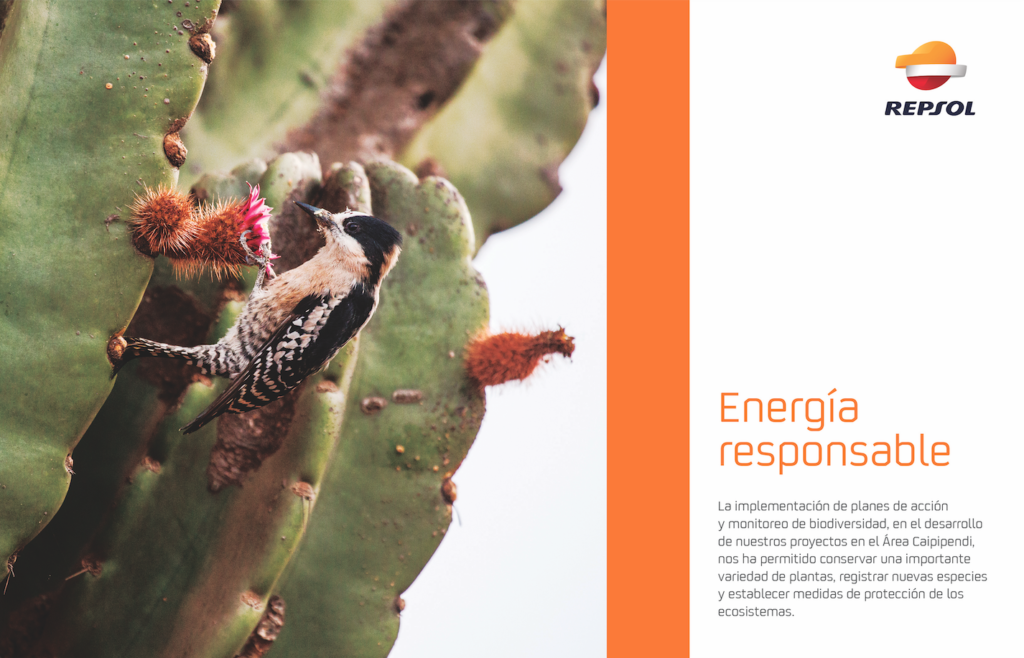Executives from YPFB state that the importation of granulated urea for the strengthening of agriculture in the country has almost entirely shifted, and they are optimistic about the projections for this fertilizer, despite the reduction in gas reserves…
ISSUE 123 | 2023
Vesna Marinkovic U.
Gabriela Delgadillo, manager of derivative and industrialized products at YPFB Corporation, stated, “We are self-sufficient in the supply of this nitrogenous fertilizer, such as granulated urea, and we also see that in these 6 years, this growth has allowed us to almost completely displace urea imports.”
She assured that this is the result of systematic work by YPFB along with a team of Agronomical Engineers, even before the commissioning of the urea plant located in Bulo Bulo, in the Cochabamba tropics.
She highlighted the exponential growth in the demand for urea in the country, pointing out that according to available statistical data, before 2017 there was an import of 20,000 tons, and she emphasized that during the 2022 management, the plant closed with 66,000 tons for the domestic market.
José Luis Domínguez, an official from YPFB responsible for marketing strategies, research, and development of the internal urea market, stated that before the plant started operating in 2016, all the urea used in Bolivia was imported, mainly from Russia. He added that currently, 99% of that urea is supplied by the Chapare ammonia and urea plant.
NET UREA EXPORTER
Of this nearly 100% urea production, Delgadillo said that between 10 and 15% meets the demand of the domestic market, and the balance, between 85 and 90% of production, is destined for export markets; mainly to Brazil, Paraguay, Uruguay, Argentina, and Peru, making Bolivia a “net exporter” of this fertilizer.
Domínguez also highlighted the presence of “good partners” such as the Association of Oilseed and Wheat Producers (Anapo), which has significantly increased its urea consumption. He mentioned that in the last year, contracts have been made with state-owned companies that directly supply this fertilizer to small farmers, projecting to reach 100,000 tons in the coming years. “This increases yields and enhances the availability of food for both the domestic and external markets,” said Domínguez.
INTERNAL MARKET, THE PRIORITY
Both Delgadillo and Domínguez emphasized that the priority is to supply the internal demand for urea. However, they highlighted the potential of the Brazilian market in terms of urea consumption, adding that the major productive areas of Brazil are near the Bolivian border.
The President of the Board of Anapo, Fernando Romero, highlighted the benefits of urea to enhance soil fertility, especially within the fundamental policies of sustainability for the production of soy, indicating that the institution has a direct marketing program with its associates through YPFB. They project direct sales of 9,000 tons of urea to their associates this year, anticipating a demand of 100,000 tons/year.
NATIONAL FERTILIZATION PLAN
In this line, Romero emphasized the importance of consolidating a national fertilization and plant nutrition plan that impacts research, technical training, soil recovery and management, as well as the availability, supply, and commercialization of urea. He suggested that this should be part of a public-private agenda between Anapo and the government sector.
“A national agenda not only towards the use of soy or corn, which are the crops we produce in this region,” Romero proposed while suggesting the importance of combining this initiative with tools like biotechnology in different crops that are part of agricultural activity in the country.
Regarding the price factor, Romero mentioned that YPFB sets the price, and it has varied. “At some point, the lowest price we had was around $300 per ton, rising to $640, and currently, it is around $420,” he emphasized, noting that exported urea has preferential prices. He affirmed that this is a matter that must be worked on collaboratively since urea has become a “fantastic” tool to boost agricultural activity.

“At some point, the lowest price we had was around $300 per ton, rising to $640, and currently, it is around $420.”

Delgadillo clarified that while urea prices are very fluctuating internationally, YPFB uses the ARGUS platform, used by the world’s leading urea producers, to set prices both in the domestic and external markets. She emphasized that if the export price of urea is lower than what is sold in Bolivia, it is due to the need to have competitive prices.
“But we set our urea price in the domestic market on the premise that, being Brazil our main export market, the Bolivian farmer will always have better conditions than the Brazilian farmer,” she said, highlighting that logistical, customs, and other costs must be added to the export price to make it a more competitive product against urea from Russia or China, whose prices significantly affect the global market.
In this line, Delgadillo emphasized that “fertilizing is not a cost but an investment” and that Bolivia could become a significant center for urea sales in the region, with Brazil as a captive market
The three participants in the ENERGÍABolivia colloquium agreed that both the increase in global demand for fertilizers and the growth of agriculture significantly impact the enhancement of urea consumption. However, there was some divergence when asked about the availability of raw materials, especially now that the Bolivian government has recognized that it has “hit rock bottom in terms of gas reserves.”
While Delgadillo and Domínguez said that the availability of gas for urea production was guaranteed in the country based on the exploration and exploitation plans designed by the government, which includes the operation of the Río Grande and Gran Chaco liquid separation plants, Romero was more cautious, pointing out that press reports are not very optimistic in this regard. From outside YPFB, it is claimed that urea production in Bolivia has become at least a “controversial” issue, mainly due to the decline in gas production.

